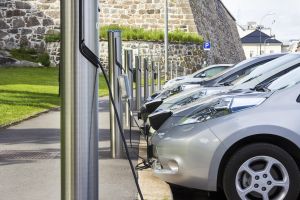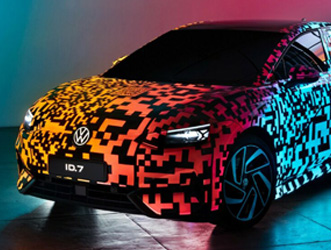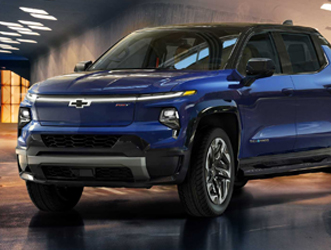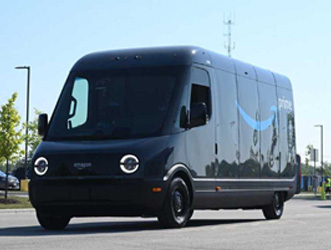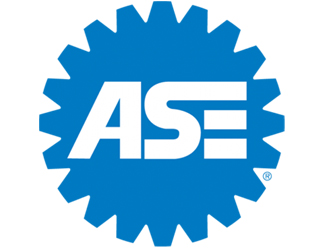All the New EVs Launching in the U.S. in 2023
Written by Iulian Dnistran, InsideEVs
Published Jan. 4, 2023
Among the cars hitting the showroom floors in 2023 are the highly anticipated TeslaCybertruck, FiskerOcean, and ChevroletSilverado EV, but more down-to-earth models like the refreshed HyundaiKona, Chevy Blazer and NissanAriya are also on this list.
2023 Hyundai Ioniq 6
Sitting on Hyundai’s E-GMP platform, the sleek-looking Ioniq 6 will be available in the spring, with a maximum estimated range of 340 miles, a max power output of 320 horsepower, all-wheel drive and a 0-60 mph sprint in five seconds.
A 77.4 kWh battery provides power through an 800-volt architecture and can be fully charged in seven hours when using the included 10.9 kWh charger. Connected to a 350 kW fast charger, the Ioniq 6 can top up from 10% to 80% in just 18 minutes.
2024 Hyundai Kona Electric
It’s an all-new generation, with more space inside and a fresh exterior design. Details are still scarce, but Hyundai did show the interior and mentioned it would feature 12.3-inch dual wide displays, as well as a so-called Curveless Bench Seat.
2023 Hyundai Ioniq 5 N
Basically a performance version of the Ioniq 5, it’s expected to come with a sportier suspension setup, as well as more power than the “regular” Ioniq 5. There’s nothing official regarding the powertrain yet, but it would make sense for Hyundai to use parts from the Kia EV6 GT, which has 576 horsepower and 545 pound-feet of torque.
2024 Kia EV9
Based on the same E-GMP platform as the Hyundai Ioniq 6 and Ioniq 5, Kia’s biggest electric SUV is scheduled to make an official appearance in the second half of the year. With an estimated price of around $50,000, the EV9 will offer Telluride-levels of space, three-row seating and fast charging.
2023 Genesis Electrified GV70
As the name suggests, this is the all-electric version of the GV70 SUV, and it’s also the first-ever Genesismanufactured in the U.S. Official details for the U.S.-bound model are yet to be released, but we have the South Korean specs at hand, and they should be similar to what’s going to be available in America.
The 77.4 kWh battery powers a dual-motor, all-wheel drive setup that outputs a maximum of 320 kW (360 kW in Boost Mode). The sprint from zero to 62 miles per hour takes 4.5 seconds with Boost Mode activated, and the battery pack can fast charge from 0% to 80% in 18 minutes.
2024 Chevrolet Silverado EV
One of the biggest rivals to the Ford F-150 Lightning, Chevy’s EV truck is set to bring a whole lot of power to the electric truck game, with a maximum of 754 horsepower and 785 pound-feet of torque, as well as an impressive 400 miles of range.
The Chevy Silverado EV is scheduled for launch in the fall of 2023, with a towing capacity of up to 20,000 pounds and an estimated MSRP of $39,900 for the Silverado EV TW and RST variants.
2024 Chevrolet Blazer EV
With a starting price of $44,995, the new Blazer EV will offer up to 557 horsepower and as much as 320 miles on one charge, depending on the trim level. There’s also a peculiar selection of powertrain options: front-wheel drive, rear-wheel drive and all-wheel drive. It will be available in summer 2023.
2024 Chevrolet Equinox EV
Hitting the showroom floor in fall 2023, the all-electric Equinox will start at around $30,000 for the base, front-wheel drive trim level. More expensive, all-wheel drive variants will also be on offer, with up to 290 horsepower and 346 pound-feet.
2024 GMC Hummer EV SUV
The SUV version of the Hummer EV pickup should see the light of day in the first half of this year, although it’s a bittersweet situation, as the Edition 1 version has been sold out for some time now.
In any case, reservation holders should finally receive their 830-horsepower electric SUVs and put the 300-mile range to the test, along with all the off-road goodies GMCis touting, like the awesome Crabwalk.
All the New EVs Launching in the U.S. in 2023 (article continued)
Tesla Cybertruck
This has been long in the making and it’s still uncertain if Tesla’s futuristic electric pickup will go into production this year, seeing how there’s no official word on it yet. But by the look of things, Tesla might just pull it off in 2023.
Tesla Roadster
It’s been five years since it was first revealed and, just like the Cybertruck, it has been delayed several times. But some reports are now saying if Tesla’s electric truck goes into production, the second-generation Roadster will be next.
2023 Nissan Ariya
Nissan’s all-electric crossover debuted in 2019 and has been available in Europe for a while already, but this year, finally, it will be available in the U.S. as well.
With two battery options available---63 kWh and 87 kWh---the Ariya has a starting price of $43,190.
2024 Polestar 3
The brand’s first-ever SUV is made in the U.S. and comes with an interesting exterior design and a starting price of $83,900 for the base, 489-horsepower and 620 pound-foot version.
A 111 kWh battery pack with 107 kWh usable capacity is standard on all trim levels and offers between 280 and 300 miles of range, depending on the power output.
2024 Audi Q8 e-tron and Q8 e-tron Sportback
Essentially, these are the facelifted variants of the previously-available E-Tron and E-Tron Sportback. They now look more like the internal combustion-engined flagship Q8 and offer a lower drag coefficient than before, which should help with the range.
Two battery packs are offered, but the EPA has yet to release the range ratings for the two electric SUVs. However, we have the figures from Europe (WLTP): the Q8 Sportback model can go up to 373 miles on one charge, while the Q8 e-tron can go 360 miles with the big battery. With the smaller battery, the Q8 is expected to achieve a range of around 298 miles, while the Q8 Sportback brings that up to 311 miles.
2023 Lexus RZ 450e
It is mechanically related to the ToyotabZ4X and the SubaruSolterra, but it’s more powerful than either of the two, both of which have just 215 horsepower from their two electric motors.
The LexusRZ 450e makes around 308 horsepower and has a usable battery capacity of 71.4 kWh, which should result in 225 miles of range on one charge.
With an estimated starting price of around $50,000, it was supposed to launch in December 2022, but that didn’t happen.
2023 Mercedes-Benz EQE SUV
Revealed in November 2022, the EQE SUV is the German brand’s eighth EV and sits below the EQS SUV in terms of size and price.
Four versions will be offered: the base will be the 288 horsepower rear-wheel drive EQE 350+ SUV, then the all-wheel drive EQE 350 4Matic SUV, the 536 horsepower EQE 500 4Matic SUV, with the AMG 53 variant capping the range. The longest-range model is the rear-wheel drive variant, which Mercedesexpects to exceed 341 miles, at least for the European market where it will be rated on the WLTP test cycle.
Fisker Ocean
With a starting price of $37,499 in the U.S., Henrik Fisker’s latest creation looks like a good deal, with its 75 kWh battery, 250-mile range, and 275 horsepower motor that can push it to 60 mph in 6.9 seconds in base Sport trim.
The other two versions, Ocean Ultra and Ocean Extreme, both feature the same 100 kWh battery pack with Nickel Manganese Cobalt (NMC) chemistry, which should provide over 350 miles of range in the Extreme. Both have a dual-motor setup, with 540 and 550 horsepower respectively, resulting in 0–60 mph acceleration times of 3.9 and 3.6 seconds. The Ocean Extreme has more range because it gets a solar roof, which can add over 1,500 miles of free range per year.
2023 Vinfast VF8
The VF8 has just arrived in the U.S. The City Edition Eco---limited edition, but the only one available right now---starts at $56,700. The City Edition Plus starts at $63,700, and the base VF8 Eco starts at $60,200.
Unfortunately, the EPA ratings are much lower than Vinfast had predicted. Vinfast said the City Edition would go about 260 miles per charge, but the EPA rating is just 180 miles. The City Edition comes with an 82-kWh battery instead of the 87.7-kWh battery in the series production VF8.
We thank InsideEVs for reprint permission.









